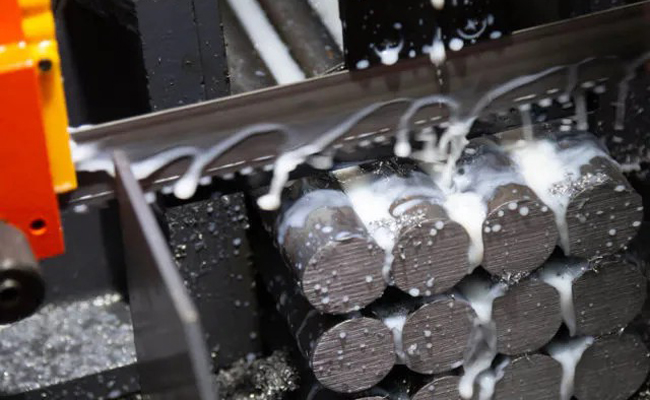BS-712N Belt Drive Bandsaw
Cutting Capacity :
Saving saw blades (such as bow saw blades, band saw blades or circular saw blades) when cutting metal can not only reduce costs, but also improve work efficiency. The following are specific methods and precautions:

1. Choose the right saw blade
Material matching: Choose the corresponding saw blade material (such as high-speed steel, tungsten carbide, etc.) according to the metal type (steel, aluminum, copper, etc.). For example:
Use high-hardness, wear-resistant saw blades to cut hard metals (stainless steel, alloy steel).
Use saw blades with larger tooth pitch to cut soft metals (aluminum, copper) to avoid chip blockage.
Tooth pitch (TPI):
Thick metal: Choose low TPI (such as 6-10 teeth/inch) for smooth chip discharge.
Thin metal or pipe: Choose high TPI (such as 14-18 teeth/inch) to reduce saw tooth jam or breakage.
2. Correct installation and commissioning
Tension adjustment: The saw blade of the band saw or bow saw needs to maintain proper tension. Too looseness can easily lead to eccentric cutting or breakage, and too tightness can increase wear.
Align the saw path: Make sure the saw blade is perpendicular to the cutting direction to avoid lateral friction that causes the saw teeth to wear too quickly.
3. Optimize cutting operations
Control speed and pressure:
Hand saw: Maintain a steady rhythm and avoid excessive force; let the saw blade cut naturally, push forward to apply pressure, and pull back and put it gently.
Power tools: Adjust the speed according to the hardness of the metal. Use low speed for hard metals and appropriate speed for soft metals.
Cooling and lubrication:
Use cutting fluid (such as engine oil, special metal cutting oil) to reduce friction and heat and extend the life of the saw blade.
When dry cutting (such as angle grinder), cut intermittently to avoid overheating.
4. Avoid common mistakes
Chip accumulation: Clean the chips in the saw seam regularly to prevent blockage (especially band saws).
Reuse of worn saw blades: blunt saw blades are inefficient and prone to heat, so replace them in time.
Wrong start: When cutting with a hand saw, use light force to make grooves first to avoid cracking of saw teeth.
5. Maintenance and care
Clean the saw blade: remove attached metal chips after cutting to prevent corrosion.
Proper storage: avoid humid environments, and the band saw blade can be hung to prevent deformation.
6. Other tips
Segmented cutting: thick metal can be cut in stages to reduce the load of a single saw blade.
Reduce idling: turn off the power tool when not cutting to avoid unnecessary wear of the saw teeth.
By choosing tools reasonably, standardizing operations and regular maintenance, the life of the saw blade can be significantly extended and costs can be saved. If it is a batch cutting, it is recommended to invest in high-quality saw blades and use professional equipment (such as CNC band saws), which is more economical in the long run.
Cutting Capacity :
Cutting Capacity :